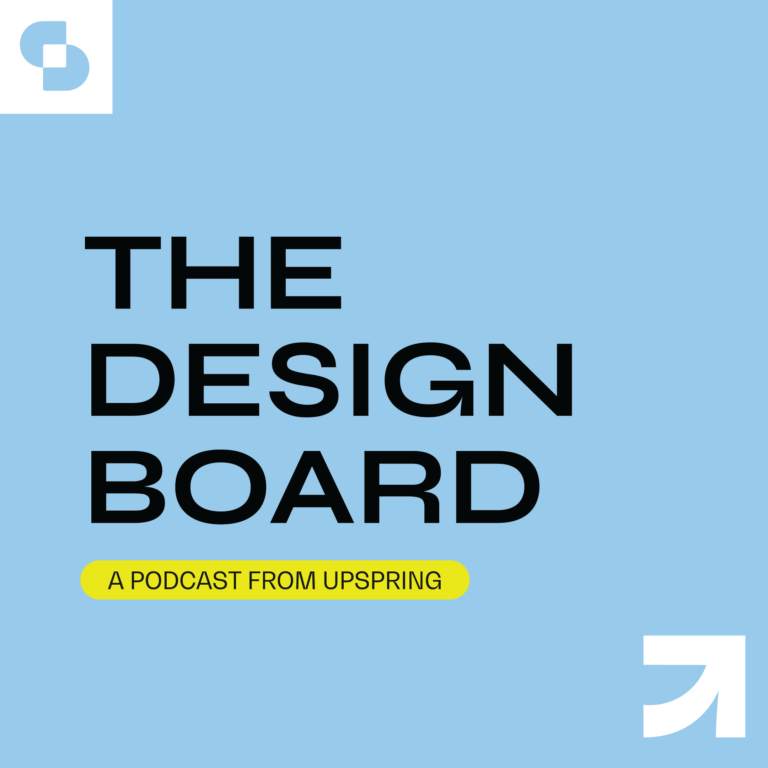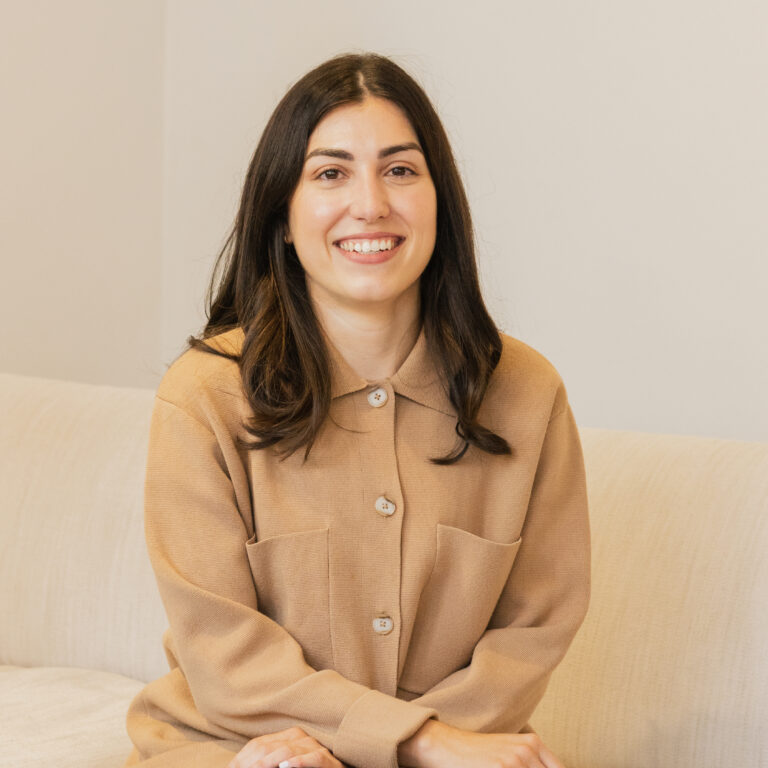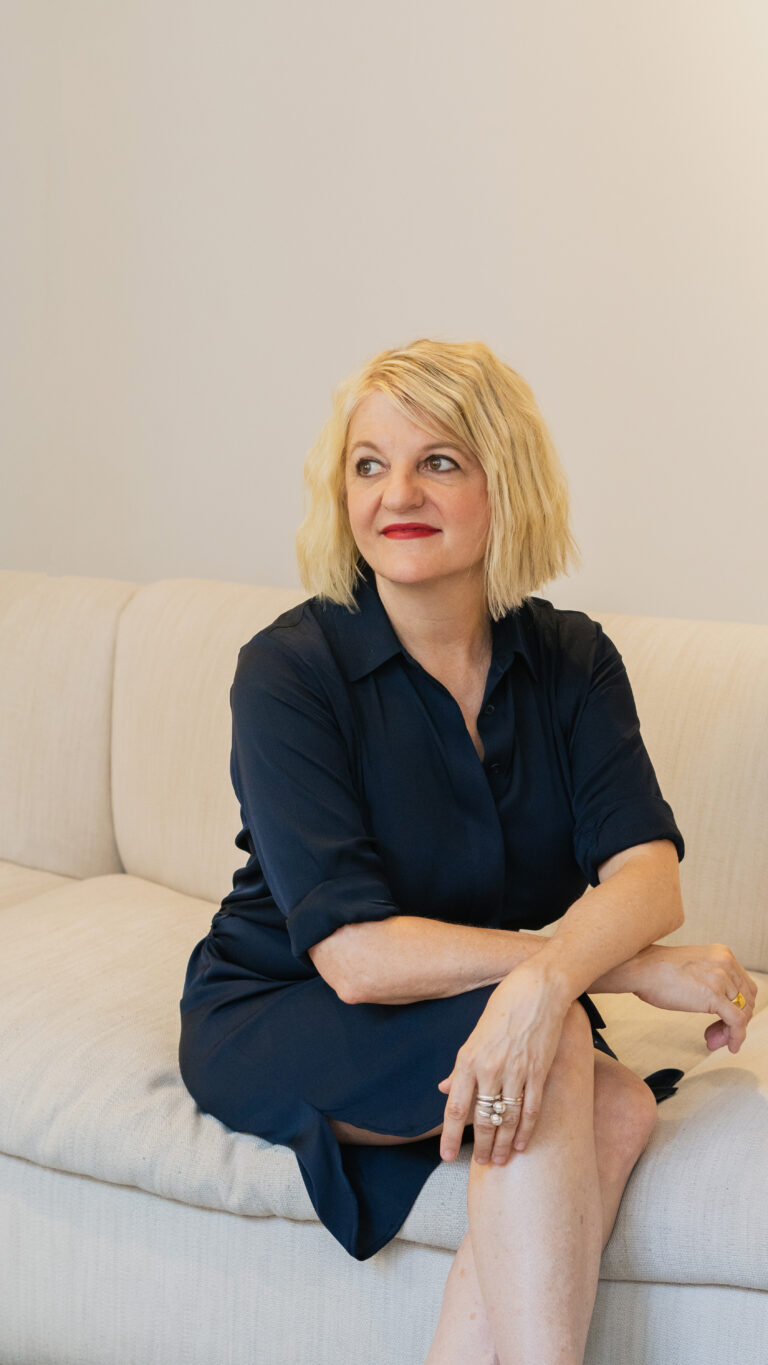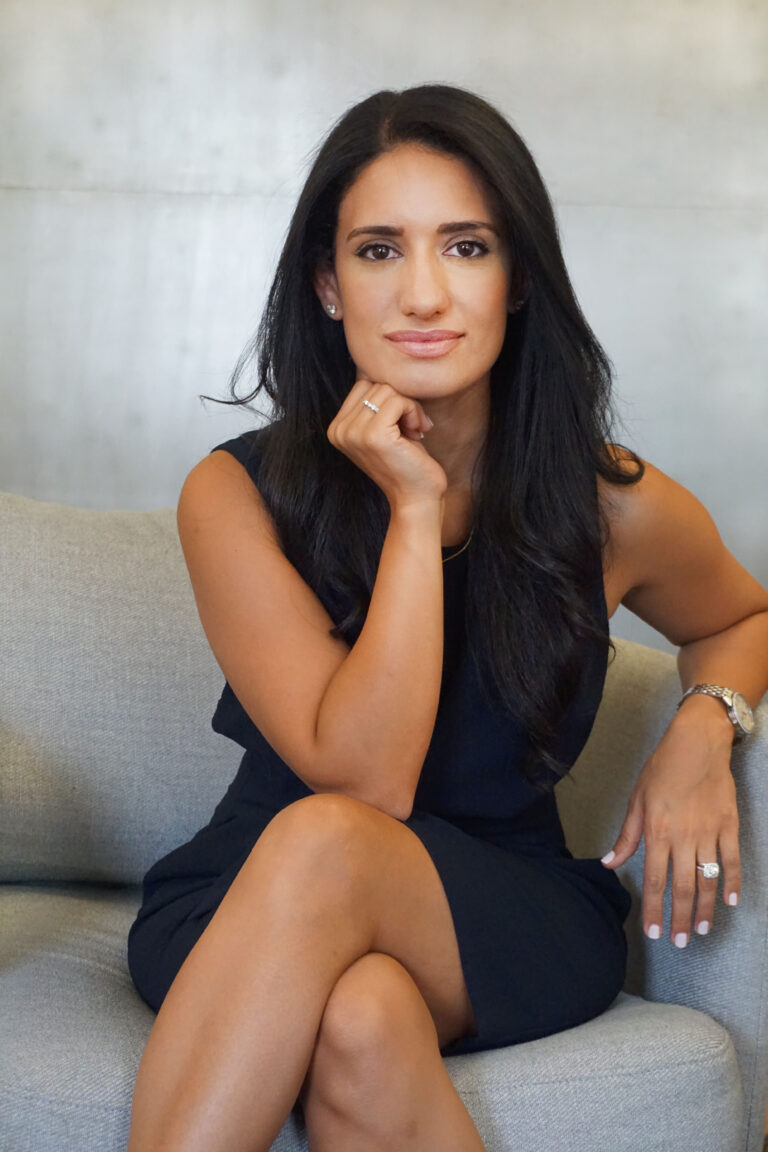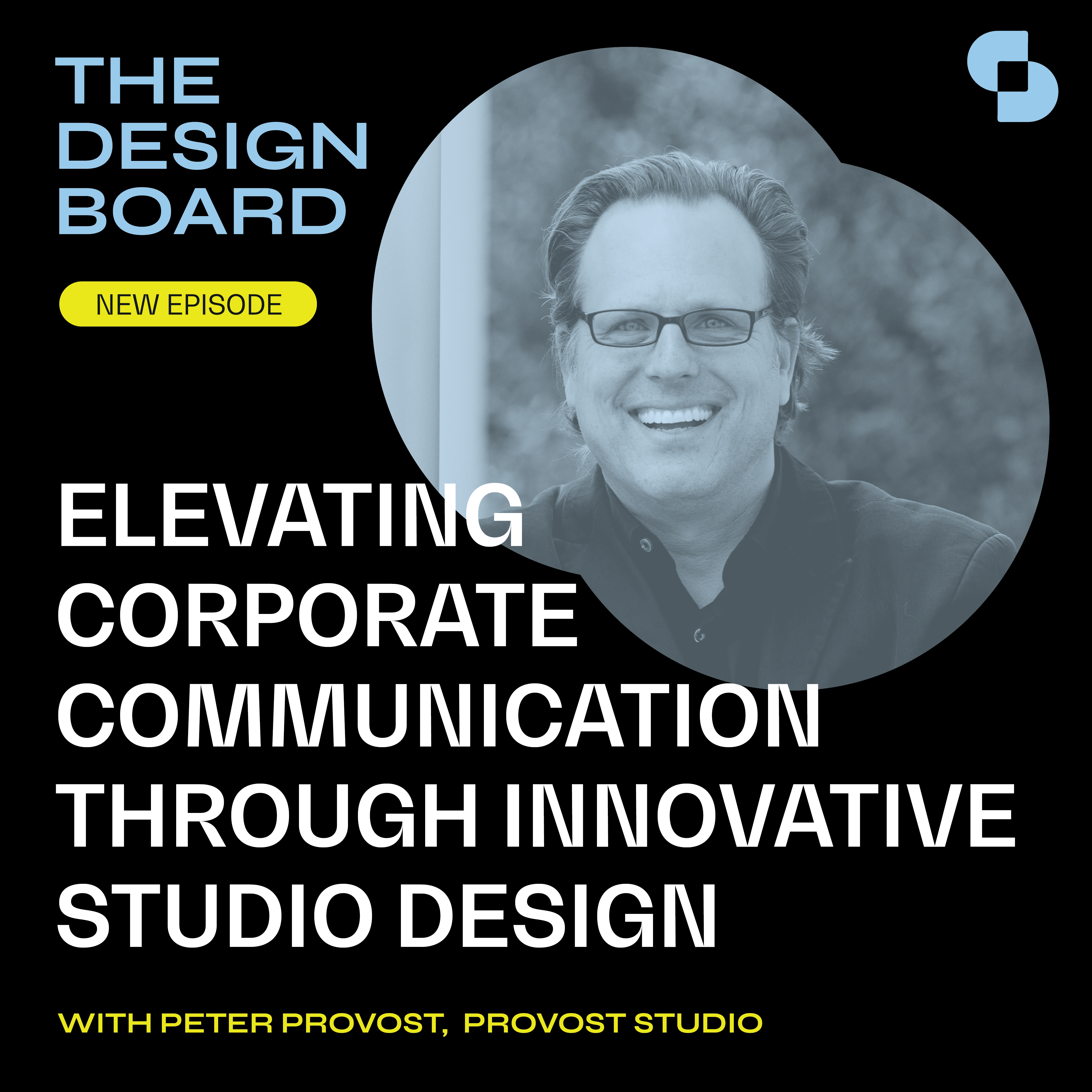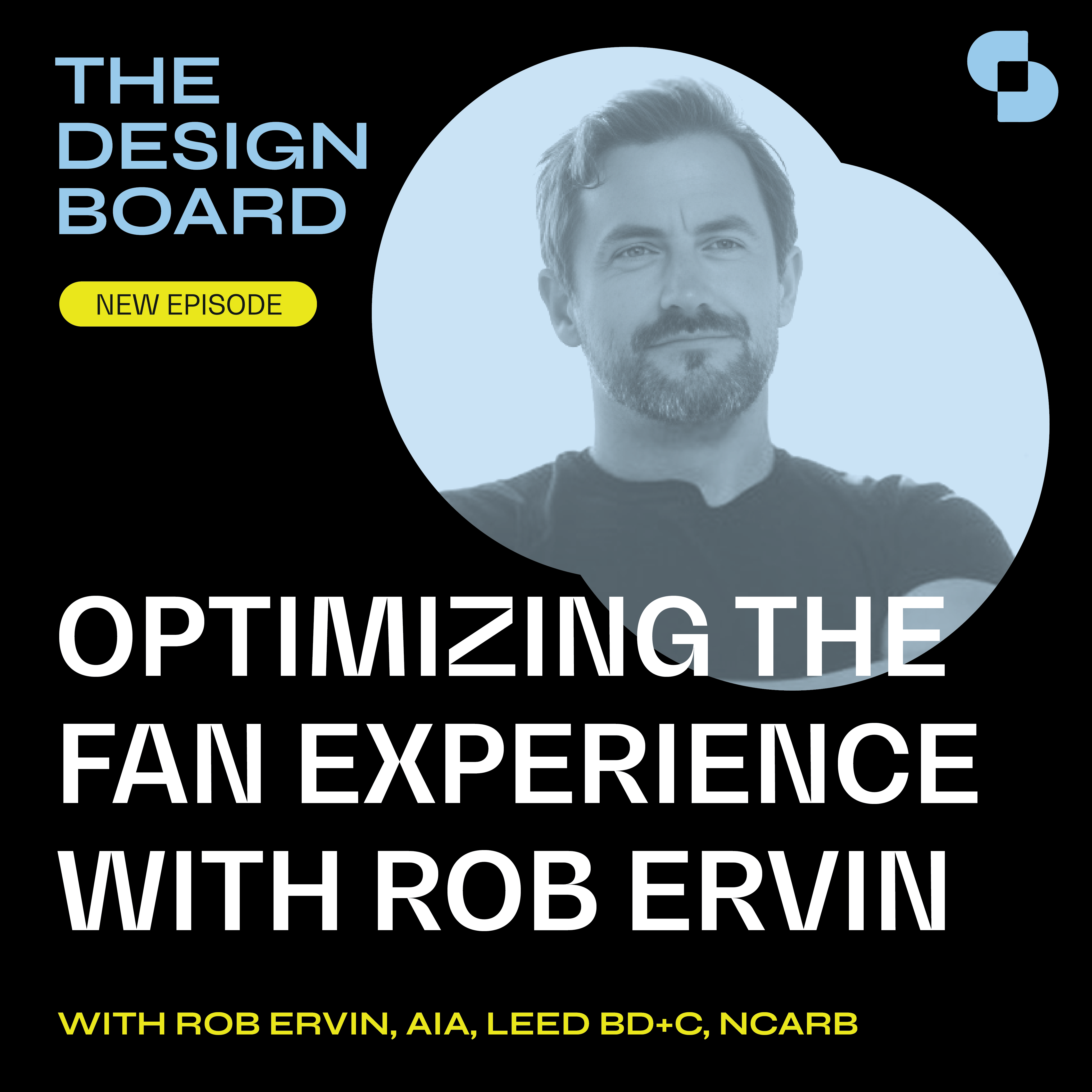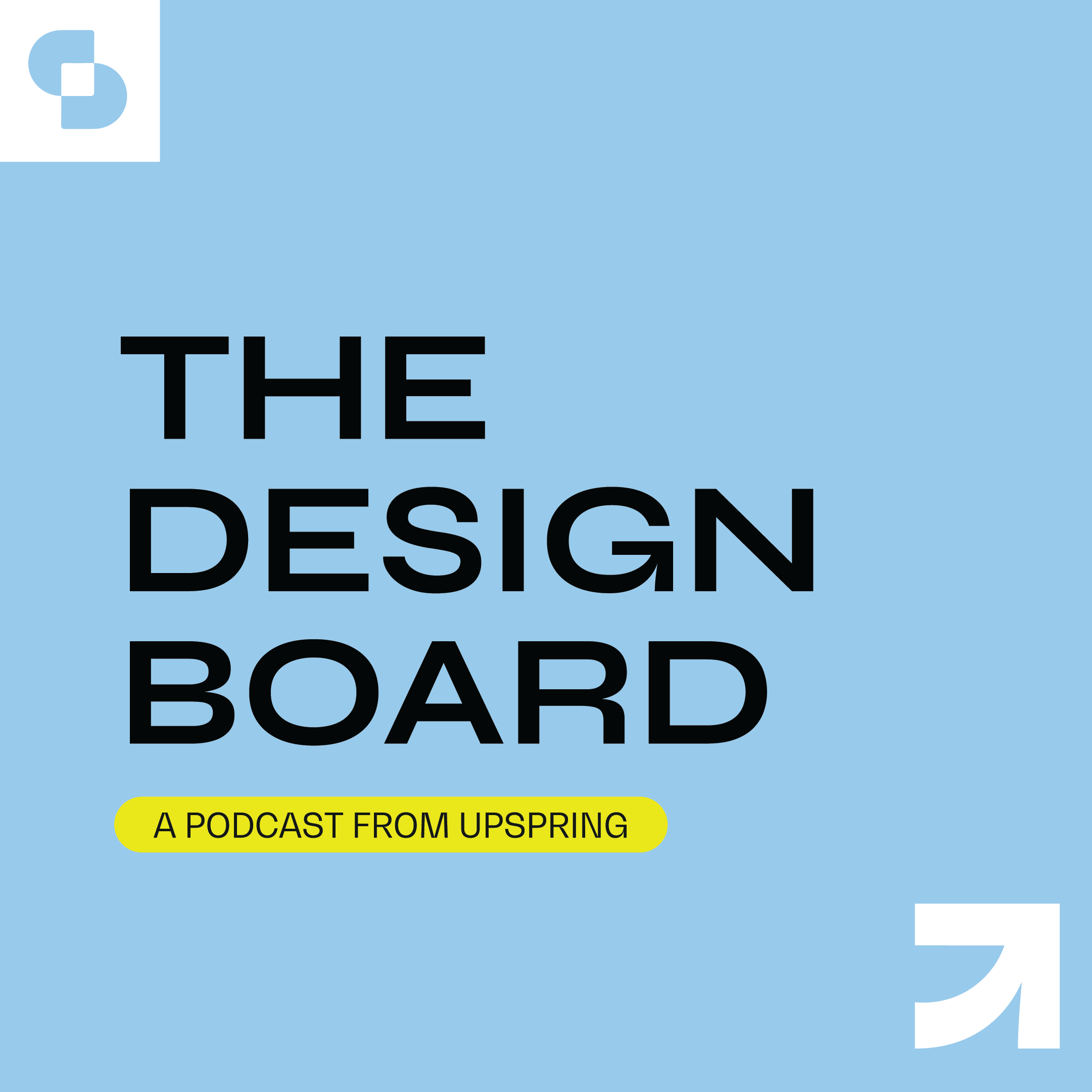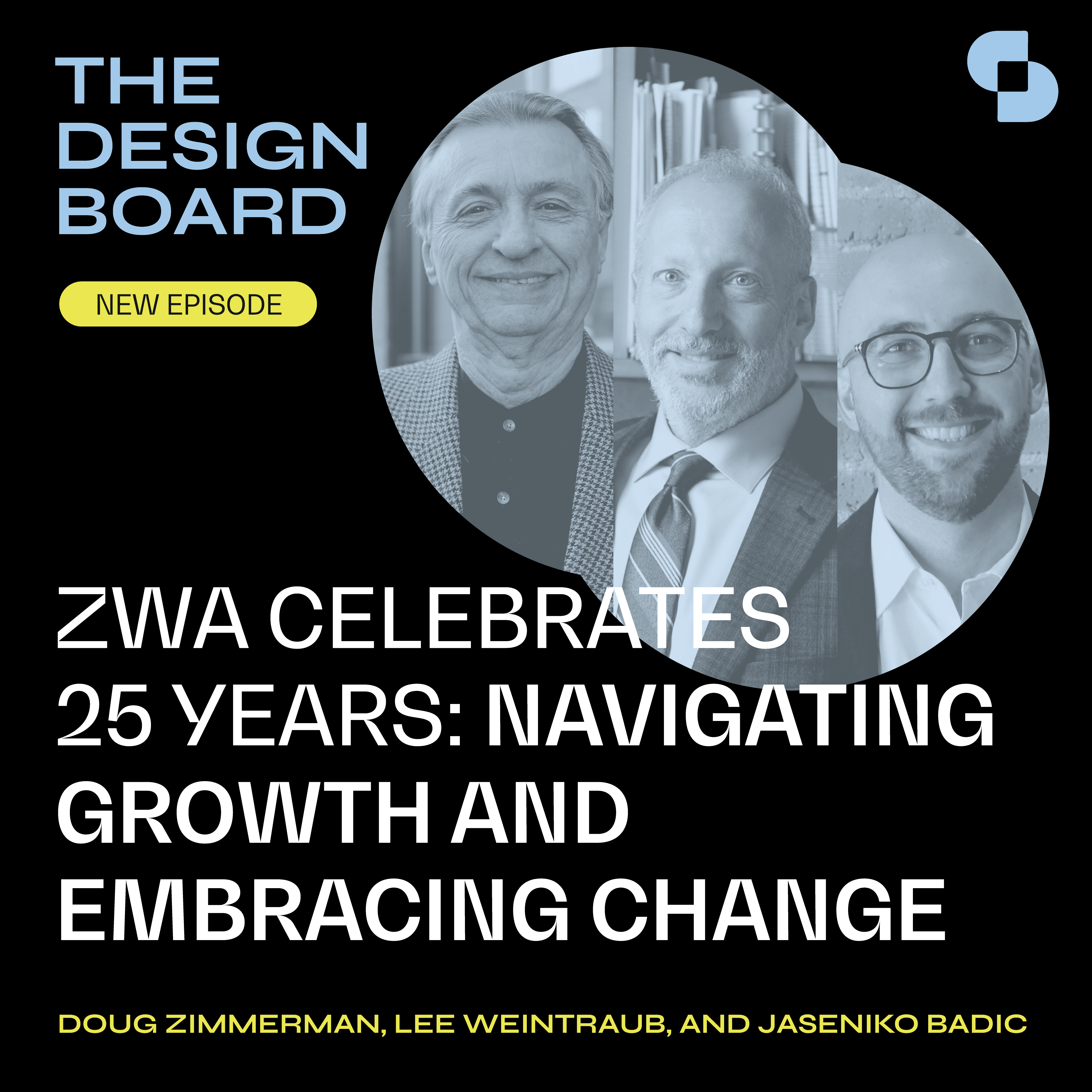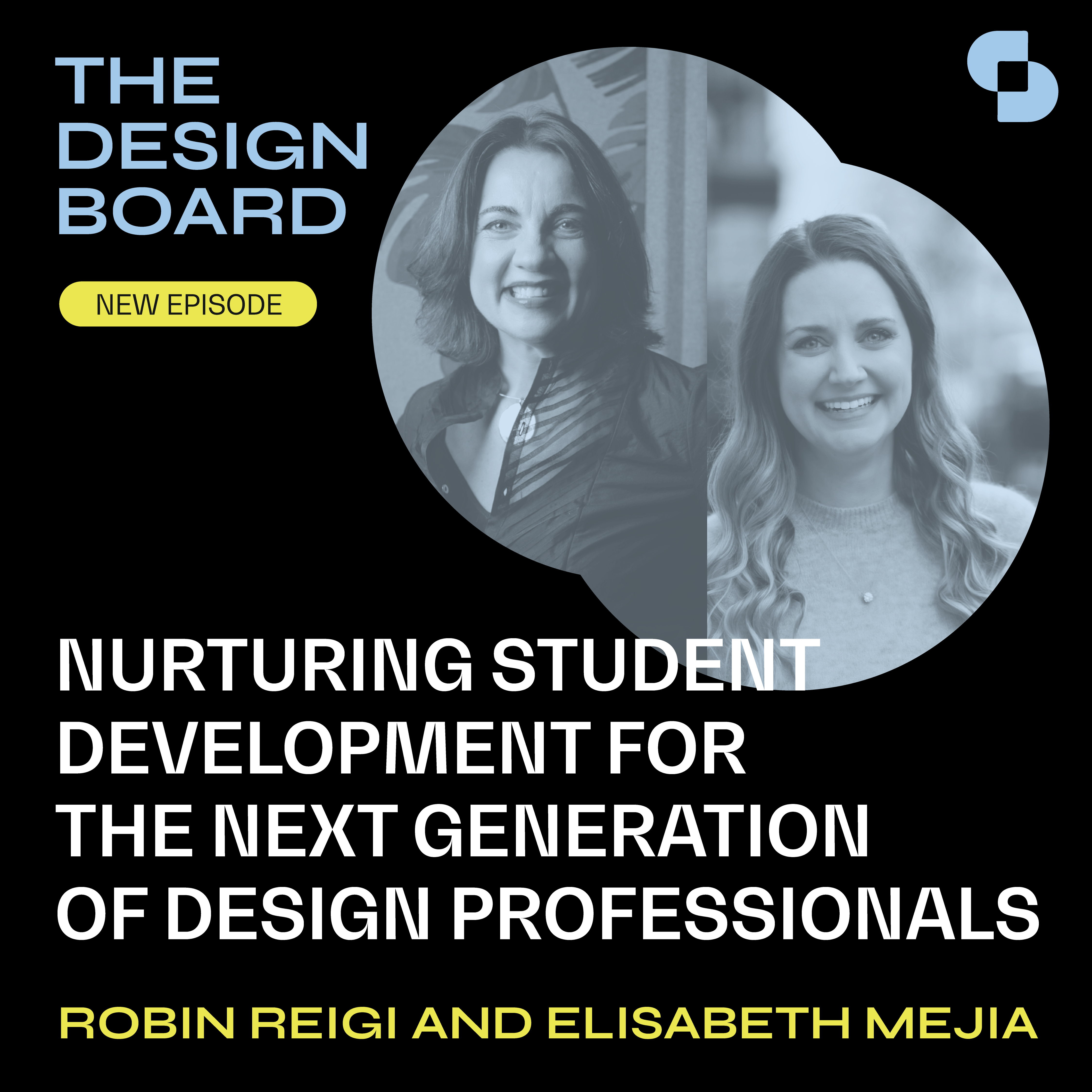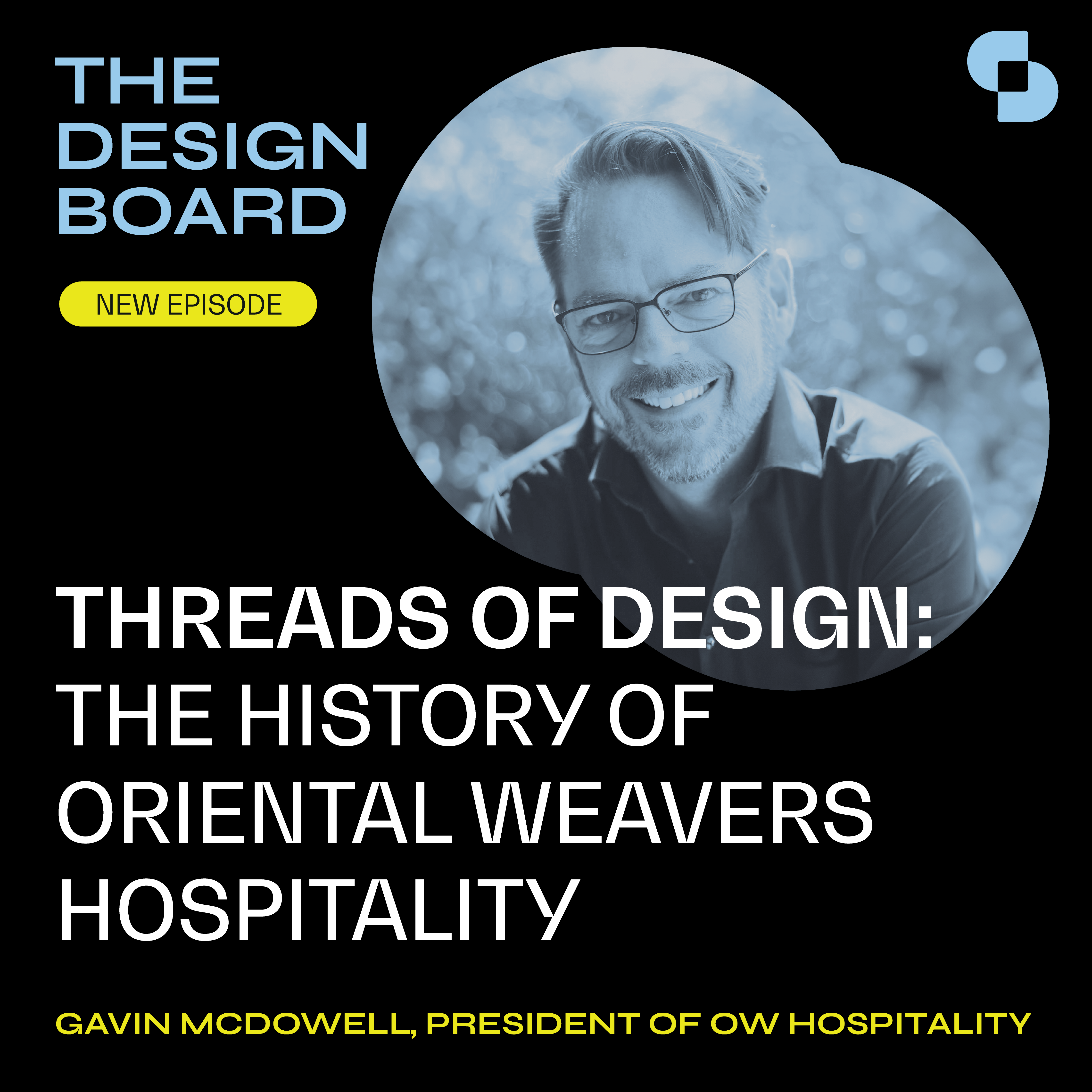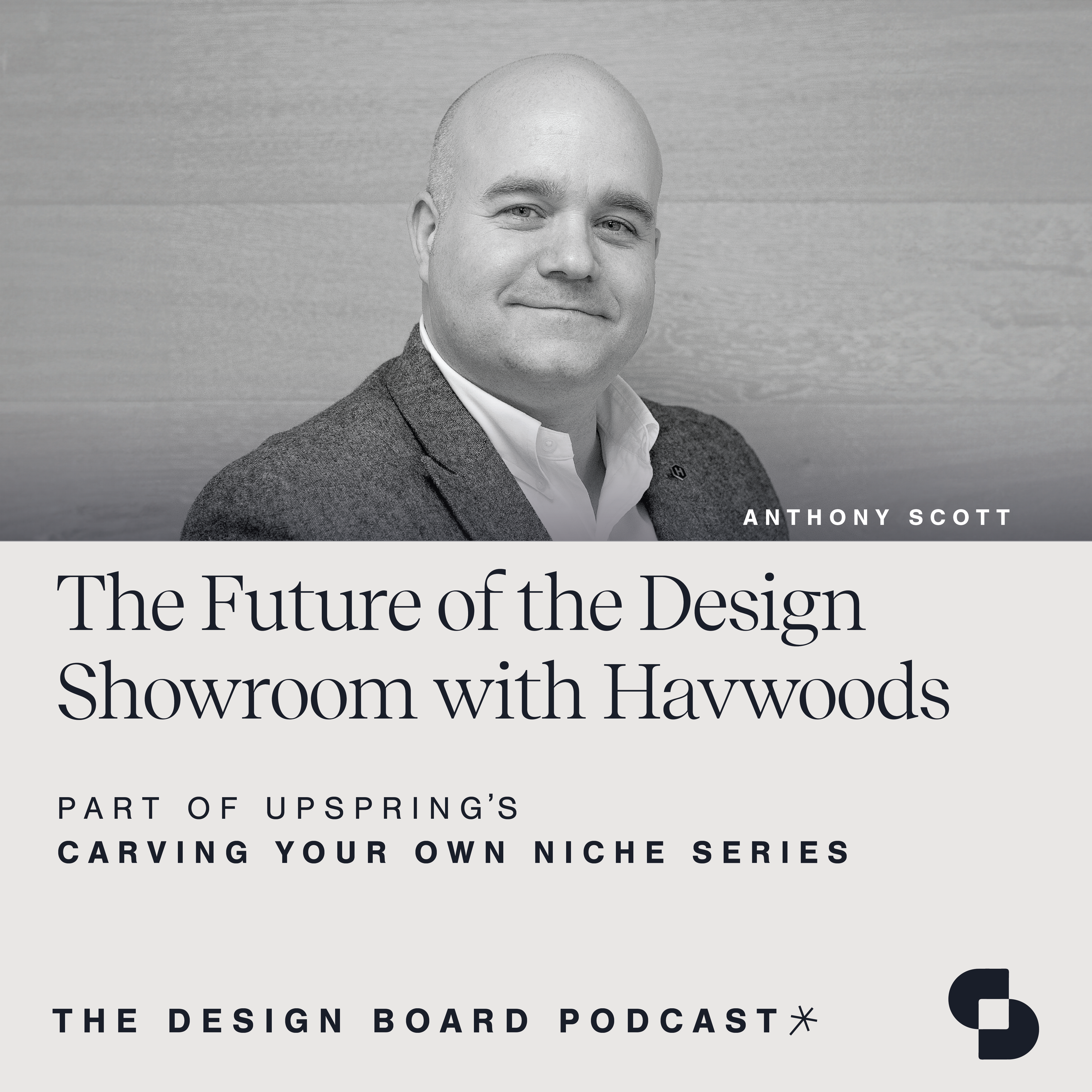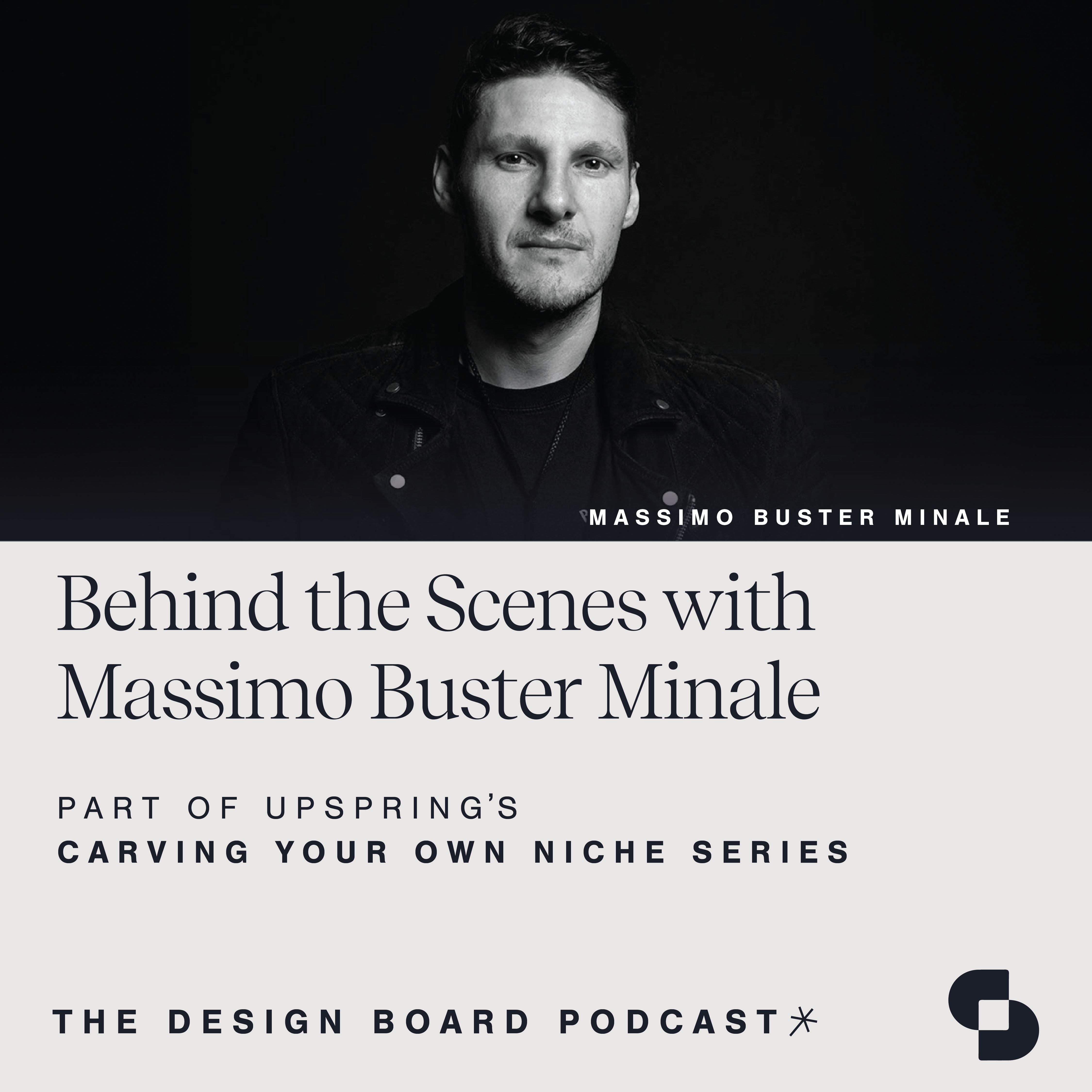In this episode, we explore the journey of Ozzie Nelson, CEO of NELSON Worldwide. Discover how he transformed a single-discipline firm into a ‘Top 10’ industry leader, with insights on growth, design philosophy, favorite projects, and future aspirations. Join us for inspiring conversations with a visionary leader in the architecture and design world.
Welcome to the Design Board, a podcast created by the team at UpSpring that focuses on design, development and everything in between. We invite innovators in our industry and explore topics that support your growth in every way. The Design Board is a proud member of SURROUND, a podcast network from Standout design group featuring the architecture and design industry’s premier shows. Check it out at surroundpodcasts.com.
Tiffany Rafii: Welcome everyone to the Design Board, a podcast by UpSpring that focuses on design, development and everything in between. We host innovators in our industry and explore topics that support your growth in every way. I’m your host, Tiffany Rafii, CEO, and co-founder of UpSpring. And today I’m joined by John Ozzie Nelson, Jr. chairman and CEO of NELSON Worldwide. In 1987 upon graduating from college, Ozzie joined his father’s 15 person interior design firm. Over the following years, he expanded the firm’s core design business, adding emerging technologies and consulting capabilities to create a compelling service delivery platform for large corporate clients. Ozzie became CEO of NELSON Worldwide in 2003. And under his direction, the firm expanded from a single discipline to its current 10 fully integrated service lines.
Since that time, the firm has executed more than 40 merger acquisitions, taking NELSON from the rank of number 37 in the industry to the top 10 with growth of more than 500%. NELSON Worldwide is an award-winning firm boldly transforming all dimensions of the human experience through architecture, interior design, graphic design, and brand strategy. With more than 600 teammates across 20 offices, the firm’s collective network provides strategic and creative solutions that positively impact where people work, serve, play, and thrive. All right, Ozzie, we are so excited to have you here today. Can’t wait to dive in and hear the story of NELSON and the story of how you’ve been involved with the firm and sort of scaled the firm over time. So I’d love to dive right in if that’s okay, and just have you start at the beginning, what should people know about you?
John Ozzie Nels…: Sure. Well, great to be here. Thanks for the opportunity to tell our story. I think people think of us as a firm that’s gone through a lot of merger acquisition, has grown pretty dramatically, and I hope see us as an industry leader. I think the part of the story that continues to evolve is going from a firm that was really very focused almost exclusively on workplace to a highly diversified firm with eight practices. And actually about 65% of what we do today is cordial architecture. So there’s really been quite a change over the years.
Tiffany Rafii: No, that’s incredible. I mean, we’ve seen it on this end and have really blown away by just sort of the way you all have scaled and grown and sort of seamlessly integrated and developed those practices. But dialing it back a little bit, how did you know wanted to be in architecture and design? What led you to the industry in the first place?
John Ozzie Nels…: Yeah, well, I’m not sure that I did. My father founded the firm and I entered the firm as a business guy. And as the story goes, I really thought that I could build scale and build a larger business, which is really where my interest was. And I often tell the story that a couple of years in it seemed like sort of the craziest thing I had done. I found myself as this guy that wanted to build size and scale in a 14 person boutique interior design firm. And it really didn’t in the beginning, quite frankly, seemed to be a fit, both in terms of where we’ve ended up. But I think also that progression as much about how the world has changed is what I have found intriguing and interesting about the journey. So a couple of years in, and quite frankly when I was really starting to plan my exit from the firm is when there was a shift in the way corporate America worked with interior design firms.
And up until that point, they had very large internal departments. They would pick the projects that they would work with outside firms with, and it was sort of a one-off kind of business. And the shift that happened fairly dramatically, and this was before there were third party like JLL or CBRE. These real estate organizations started to get out of the design business and started to look for firms in which they could take their entire portfolio and either have one partner or have just a few partners. And that was really transformational because that really did play to my strengths and interests of really working on a larger basis, capitalizing on project management and ongoing account management strategies that allowed us to grow pretty dramatically through those years. We grew from a 14 person firm to something like a hundred person firm.
Tiffany Rafii: So I mean, as a business owner myself, I know the climb as you grow and as you scale and as you expand. And I’m here to learn as much as everyone else listening. I mean, we’ve scaled from Sarah and I to 65 people and I know you all are reaching the five, 600 mark as a team. And so we have a long ways to go. And so I know the pain points with growth. You’ve grown the firm more than 500% since becoming CEO. How have you accomplished that and what challenges did you face along the way that you’ve sort of navigated?
John Ozzie Nels…: Yeah, once or twice a year, I have an opportunity to lecture at a couple of local MBA classes. And one of the things that I often point to in the outline in terms of the ways that I look at things is that I think an entrepreneur and a CEO have to be prepared to respond to a changing world. Not at the speed at which makes them comfortable, but at the speed that is necessary. And so there’s a dramatic amount of change that’s going on, and I think whether that results itself in a growth strategy or that just results itself in being more successful in however you define it. I think that the one thing that none of us can do is dictate what the world’s going to send at us. So if you look at the pivotal points in our story, so I built a larger firm that had some workplace but really had a formula that was much more consultative.
And we were for probably about a seven-year period, we were sort of the extension of what became Bank of America. And so I often joked that my business plan was to wait till Labor Day and that was because on Labor Day Bank of America always bought somebody. And then we would get these instructions as to whether to go to Florida because they bought Barnett or go to Boston because they bought Fleet. And with that would come a year’s worth of work of analyzing what they bought, integrating those firms, and then we’d be on to the next Labor Day. And the bank came to us at one point and basically said they’re looking for firms that have more size and scale, love the relationship, appreciate everything we did, but if we couldn’t quickly grow scale, we weren’t going to be their partner. And so the first leg of our growth, and again, I think people point to the, I guess the acquisition part of it was not even something that I was predisposed to do.
But when you’re forced with a challenge like, “How do I quickly diversify? How do I quickly build a network?” That was not going to happen organically. Plus I think it’s a matter of sizing up where you are in a journey versus others. And there were clearly a lot of interior firms that were feeling the same sort of pressure. So first part of the leg of the journey was really to assimilate other interior workplace firms that were in other geographies so that we have a geographic network. That really seemed to be the end of the game and that’s where we thought we would end. And then in terms of all the acquisition and then the downturn of ’08, ’09 came and it became very clear that a firm that was only focused on corporate interiors could not survive the sort of up and down economic cycles that we started to see in ’08, ’09. Another thing that I talk about when I have the opportunity to tell the story is I think risk is really relative.
And while we can all do whatever we think is prudent to de-risk a business, I think there were so many people after ’08, ’09 who saw risk as really economic risk. Were never again, we won’t be here. And then here comes the pandemic, something that we never could have predicted. And ironically, there’ve been really big winners and big losers, many of whom on either side never dreamed there would be a pandemic coming, but it was just happenstance. And so the question becomes when you are faced with those sorts of challenges, how do you respond? And for us, the diversification that we started coming out of ’08, ’09 was exactly the thing that helped us to survive the pandemic. Teammates within the company often, the same teammates who question why we were going through 10 years of the kind of acquisition that we were doing to create the organization that we have, were sometimes the first ones to say, “Thank God we did that and that we were as diversified outside of workplace as we are today after the pandemic.”
So today we find ourselves in these eight practices. I would say that while it wasn’t about what I found to be particularly fulfilling, I was looking for economic sustainability as a CEO. I think that is what I enjoy the most today is the richness and the diversity of any given day. Have an opportunity to go to a site where we’ve done the first multi-story industrial building in the country and just the colossal size and complexity of this structure. And then the next day it’s the W Hotel in downtown Philadelphia, which is 52 stories and a very different building. But just something that we always aspire to do projects of that size and scale, and it’s particularly fulfilling to be able to be playing in very different practices.
Tiffany Rafii: That’s incredible. Yeah, no, I couldn’t agree more that from a growth standpoint and a strength of foundation standpoint, diversification is key in ensuring that success. I know we feel the same way here, and we saw that in the pandemic. Actually, we started our firm in ’08, ’09, on the heels of that economic climate, really taking advantage of the fact that people were sort of maybe cutting their marketing and PR budgets. And we had an opportunity to really just show them what we were capable of and sort of grow in that way. But over time, building on that foundation and really starting in ’08, ’09, I think gave us the perspective to be able to weather the pandemic. So no, I couldn’t agree more. So leaning into that diversification, all these incredible practices, you are practice driven rather than location driven. Talk to us a little bit about that structure.
John Ozzie Nels…: Yeah, I think for any CEO, it’s a combination of first having the right vision. Again, that vision is not built by being in some sort of ivory tower, but it’s a combination of feedback from those in the firm and also your own observations in terms of where the world is going. It is kind of funny that I wanted to pivot the firm to the practice P&L before the pandemic. And got a lot of pushback from people that were from much more traditional view of the industry, that that’s not the way it’s done. It’s really done by geography. And then the pandemic came, and I think historians will look back at the pandemic in just so many dimensions. But I think one is people are capable of a tremendous amount of change, but they do have to either be incredibly motivated to do that or incredibly scared to do that.
Whatever that is, there has to be some driver that breaks the status quo. And I often tell the story that if I said to people, “Look, we’re going to do some tests of our systems on Tuesday morning, and if it all goes well, we’re going to work from home for the next 18 months.” People would’ve looked at me like I was completely crazy and I would’ve gotten all the lectures on change management, but that’s exactly what we did, and we never looked back. And because people wanted to keep their job, everybody made that work in a way that was really magical. But the point was because we weren’t in the office and because now people were just naturally working across the network, it was the enabler to say, “Okay, we should now have our P&L by practice.” And in fact, by April of ’22, it was funny, we had gone from in ’19 people telling me that was not the way to do it.
To people coming to me and saying, “Of course that’s the way we should run our business.” So sometimes you just have to kind of slow the integration of things to get people on board. But that really has been… I think it really is the only way to run our business. It allows us to align… Well, first of all, to start with a strategic vision of what is it that we want to be in each one of these practices. When you really look in detail at a practice, it’s not just a practice, it’s a series of sub-practices. So higher ed is not higher ed, it’s library buildings, it’s student unions, it’s different types of projects. And the reality is how the world has changed is at least our industry, you’ve gone from being a generalist and you had loyal clients who came to you with very general needs.
And that was the firm that I entered 36 years ago was one day we did branch banks, the next day we did office space, the next day… And so you were the general practitioner. Today, back to my example, with higher ed, if you haven’t done five libraries in the last five years, you’re not going to get on the long list. So you not only have to figure out which of those practices you want to be in, but which of those sub-practices are the ones that you believe that you can be competitive with? And if you want to expand those sub-practices, you have to be creative in terms of either acquiring firms or acquiring talent. But once you look at things through that practice lens, it’s much easier to be strategic. And then of course it’s much easier to do revenue forecasting and align expense to that.
Tiffany Rafii: So now that we’ve sort of dialed into the practices, I’d love to talk a little bit about overall design approach. I know that NELSON is deeply passionate about transforming all dimensions of the human experience. How does that translate into actionable design?
John Ozzie Nels…: Yeah, well, I think we always were a firm that was really driven by client need. I think stereotypically you have two different types of firms. You have the firms who have a look and people go to them because they like that look. I love the Frank Lloyd Wright quote, Frank Lloyd Wright is credited with saying that it’s too bad that people have to live in his houses. So there’s that side of the industry. And then I think there’s a side of the industry that really is very talented people that are aligned around trying to accomplish something for a client. And if you take that one step further, the world is just such a dynamic place today, and I think that the physical environment has become such an interactive part of people’s experiences, hard to really have a great experience in a restaurant. If that restaurant isn’t really attuned to the type of restaurant it is, the type of interaction that they want, breaking that restaurant up into the different ways that you can interact.
So if you take that analogy to larger planning, like everything from city planning to community planning to building planning, it really is about how do we make the experiences that people have in those communities and in those structures richer. And how do we align what the experiences are? How does a life science building differentiate itself from a restaurant? And just as importantly, what do we learn about what’s worked and hasn’t worked in those environments? Go back to the drawing board, if you will, and integrate those lessons learned and just as importantly continue to evolve in a world that just goes through an amazing amount of change. Whether that’s demographic change, whether that’s technology change, it is very clear that we live in a time in which there is more change than ever before. And so if you’re really going to hit that sweet spot in terms of maximizing people’s experience, you also have to be sensitive to not what you’re designing for today, but what the world is going to be next year and beyond.
Tiffany Rafii: I’d love to chat through how you cultivate talent in that same vein because that is an approach that, I mean I’m sure requires a lot of mentorship and the cultivation of systems and processes. But that also lend themselves to creativity and exploration while still making sure that the integrity of that process is upheld. Talk to me a little bit about how you foster that collaboration, that sense of community, that culture internally, so that can happen authentically through every practice and every project.
John Ozzie Nels…: I think actually a lot of that starts with the right alignment of the people that you bring into the organization to begin with. The people that are going to be more satisfied in the firm that I described that has a certain look and that’s what they do and the client either likes it or they don’t. Quite frankly, it’s just not going to be satisfied in our organization. And so one, I think it’s about bringing together the right people. Two, I think it is about transparency. It’s about really creating the right teams with the right leaders who are conscious to not only bring people along, but to give them opportunities to participate. And I also think it’s about these teams getting even stronger and even better through the work that they do and learning through what worked, what didn’t work. Lamar Wakefield is one of the leaders in our organization came through one of the acquisitions that we did.
It talks about when we look at mixed use facilities, one of the landmark mixed use projects that we did is called Avalon, and at the beginning of that project, he and the team went and visited any number of mixed use sites around the country. And Lamar tells the story that the laser tape measured and photographed everything that worked and everything that didn’t work. But just through that experience of a team going through, looking at all of these experiences and then together creating the best of the best. That’s not only a bonding experience that really is a way of honing talent in a way that I think is a combination of fueling their creative juices. But also looking at subjectively what are the elements that work and don’t work.
Tiffany Rafii: No, absolutely. I would love it. I mean, you just spoke about projects a tiny bit, but I’d love it if you wouldn’t mind sharing just some core projects that have just sort of been key stones for NELSON throughout the years.
John Ozzie Nels…: Sure. So I just mentioned Avalon would be remiss if I did not mention The Battery, which is the mixed use around the Braves stadium in Atlanta. And so our mixed use projects tend to fall into the sports and branding, the projects that really are sort of a result of new areas of wealth and a high population that are coming together. That’s the Avalon project. Just finished one similar to that called Fenton, which is the largest project ever done by the city of Cary, and that’s about two and a half million square feet of mixed use. Everything from retail to office. So the mixed use side certainly stands out. From a corporate interior standpoint, we worked with some of the most prestigious brands around the country.
Certainly have had a very longstanding relationship with companies like Verizon and Bank of America where we’ve done a number of projects where we’re just very proud of those work with a wide range of law firms. Interesting to work with law firms today as they’re really trying to make that shift from an environment that was really built around the library to one that is really much more about how to use digital experiences to get information faster. But how do you interact with clients in that environment? Our retail practice has won any number of awards, and I think one of the ones that people often find the most impactful is the American Girl Project at Rockefeller Center where the girl takes her doll and parents often describe it as where the child takes their doll to spend a tremendous amount of money-
Tiffany Rafii: Tremendous amount of money. I redirect my five-year-old to my mom every time she wants this. She says the word American doll. I’m like, “Oh, Mimi, Mila wants you.”
John Ozzie Nels…: You’re very smart. You’re very smart to do that. And then there’s our asset strategy business. Every single day we represent 1,350 buildings across the US, do a lot of work in the Empire State Building, do a lot of work here in Minneapolis and the IDS Tower. So large buildings that kind of define the horizon, and then working with landlords to really reposition those buildings. So Nomad Tower in New York used to be a building that kind of turned its back to the very hot NoMad neighborhood. And through changes to the outside, changing the address and then really creating very impressive amenities in the building, the building is really transformed. So there’s a number of these lower B type buildings that we’re able to reposition and create just a whole new brand for. So when you look at the breadth of what our folks do, and obviously I don’t do that, so I could say it’s very impressive and their passion is just really clear on the projects that we do.
Tiffany Rafii: Well, there’s no doubt that you all have been part of some incredible projects throughout the years. Give us a little preview of what’s to come, what can we expect from NELSON in the coming year?
John Ozzie Nels…: I think that the practice orientation is here to stay. We benchmark success in a number of different ways, but we do benchmark it practice by practice. So in each of those practices, continuing to ascend as an industry leader is important to us. I think that we live in an industry that will continue to see more and more consolidation, so you can expect to see us grow both organically and through merger acquisition. I just make the joke that the 14 person firm that I joined, the technology guy was somebody that could string a drafting board today with the significant investment that it takes in terms of capital and technology and marketing and the increased sophistication that there is. I also think that if you look around the industry, obviously we are not the only ones that have diversified. And you used to see a lot of firms that were just really specialized and that was what they did.
I think with the diversification, I think with the increased complexity and increased capital expense expenditures, it does really force an industry that will just continue to see consolidation. And obviously an opportunity for us as we have seen as a consolidator. It is hard to have a week go by that I don’t get at least one email from a broker representing a firm that’s selling. I also think that if you look at the demographic shift in the US, a lot of baby boomers retiring, which again, I think will spawn a lot of opportunities to continue to grow by M&A. So we’re open for both the organic and the inorganic growth, but I think it is important to continue to keep the foundation that we have, but to continue to keep up with the size and scale in the industry.
Tiffany Rafii: One last question. I do agree that we’re seeing a lot of consolidation in the industry. Do you have any advice for either smaller firms who are out there looking for the right type of acquisition or acquirer or from the perspective of a firm that is looking to either grow by merger or acquisition. What are maybe some things they should keep in mind that maybe aren’t so obvious?
John Ozzie Nels…: Again, when I have the opportunity to talk in some of the MBA courses, I talk about the difference between our early part of our journey and the end part of the journey. You get to where we are today, we have traditional capital sources. We operate in a way that is relatively conventional. When you think about a firm that has lenders and a firm that approaches M&A, in those early days, it was all about creativity. And it was all about figuring out what is the asset that we have that may be attractive to somebody else? What does the industry look like and what are others feeling and how do we stand out in all of that activity that’s going on? So early on, the first round of acquisitions that we did, we had virtually no capital. And so I put a non-cash formula together, approach fortune firms and was able to acquire controlling interest in those firms without putting a dollar of cash out.
But that meant that I had to really read the win-win in that situation, and I had to create whatever advantage we could bring to that transaction. I would say to those that are looking to potentially be acquired as well as those acquiring, again, I think for us in the smaller creative days, we had to be pretty opportunistic. And so we were a little bit more flexible in terms of how strong of a cultural fit we had. The larger we have gotten, I think the more significant the merger acquisition, the more important culture is. I think there’s a lot of things that you can overcome in negotiations. You can overcome cultures that are very different. And I would say that you’ll either spend a tremendous amount of time trying to change the culture of the organization that you’ve acquired because there’s some asset there that’s worth it. Or it will be a merger acquisition with two organizations that are culturally not aligned, can be such a distraction from your business, and it literally can take you down.
Tiffany Rafii: I can completely see that, so helpful Ozzie, thank you. Thank you times a million for your time today.
John Ozzie Nels…: Thank you [inaudible 00:26:46].
Tiffany Rafii: It was really wonderful to hear the story, and I mean I personally took away a lot from our conversation. So again, thank you and we’ll be watching and following along.
John Ozzie Nels…: Sounds great. Very nice to meeting you. Thanks, Tiffany.
Thank you so much for listening in with us today. We hope you leave inspired by the ideas in today’s episode. For more follow UpSpring on LinkedIn and Instagram, and don’t forget to check out the amazing lineup of shows brought to you by the SURROUND podcast network at surroundpodcast.com.

